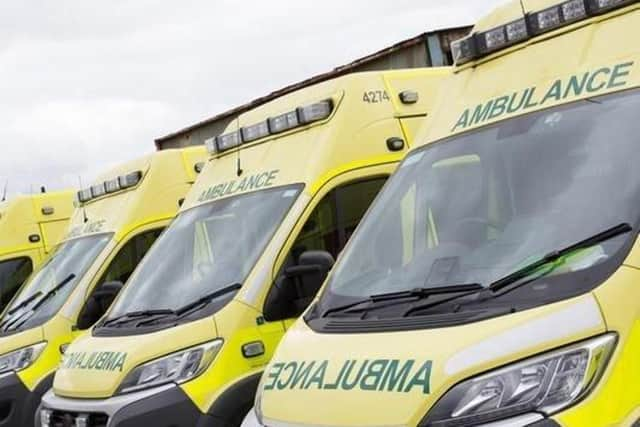Ambulance response times to life-threatening West Yorkshire incidents now two minutes slower than in 2018
and live on Freeview channel 276
The coronavirus pandemic may be largely behind us but NHS England ambulance services still remain under acute pressure.
Response times for life threatening conditions (category 1) have not hit target in a year according to data.


Advertisement
Hide AdAdvertisement
Hide AdYorkshire Ambulance Service average response times to category 1 incidents now stands at nine minutes and 25 seconds - increasing from an average of seven minutes and 21 seconds between 2018-19.
The analysis comes after health bosses openly expressed concerns at dangerously long ambulance waiting times across the country.
Ambulance crews are dealing with more life threatening incidents such as for heart attacks (known as category 1 callouts) than in previous years
In April of this year these types of calls were at the highest level for the same month since 2018, when current records began, at over 76,500. They represented 14% of all incidents in comparison to 9% in the same month during previous years.
Advertisement
Hide AdAdvertisement
Hide AdThere were nearly 20,000 more life threatening incidents recorded last month compared to in April 2021, and more than 26,000 more than during the height of the coronavirus pandemic in April 2020.
Last year (2021-22) people requiring medical care waited an average of 32 seconds for their 999 call to be answered – six times longer than the year before when the average answering time was five seconds. There were also 10.6 million calls answered last year, up by 32% on the previous year.
People with life threatening conditions (category 1) waited on average nine minutes two seconds for an ambulance to arrive in April – two minutes two seconds greater than the NHS’s seven minute response time target.
April’s response times for life threatening incidents were the 6th highest since August 2017 when current records began.
Yorkshire's average wait time exceeds the national average.
Advertisement
Hide AdAdvertisement
Hide AdJohn McSorley, Head of Operations (West Yorkshire) at Yorkshire Ambulance Service NHS Trust said:“Like all other ambulance, health and community services across the country, we have been experiencing operational pressures. This has been exacerbated by a number of factors, including an increase in demand for category 1 patients in a serious or life-threatening condition, COVID-19 related staff absence, and delays in handing over patients at busy hospital emergency departments.
“Our dedicated staff are doing their best to respond as quickly as possible to all 999 calls, but we acknowledge that some patients are having to wait longer for an ambulance response.
“All emergency calls are categorised according to the nature of a patient’s illness or injury and those in a life-threatening condition are always prioritised. It’s important that members of the public only call 999 for an ambulance when it is a serious or life-threatening emergency. This will help us to focus our efforts on our most poorly patients.”
London Ambulance Service had the quickest response times in England taking six minutes 40 seconds, followed by North East Ambulance Service at seven minutes 16 seconds.
Comment Guidelines
National World encourages reader discussion on our stories. User feedback, insights and back-and-forth exchanges add a rich layer of context to reporting. Please review our Community Guidelines before commenting.
